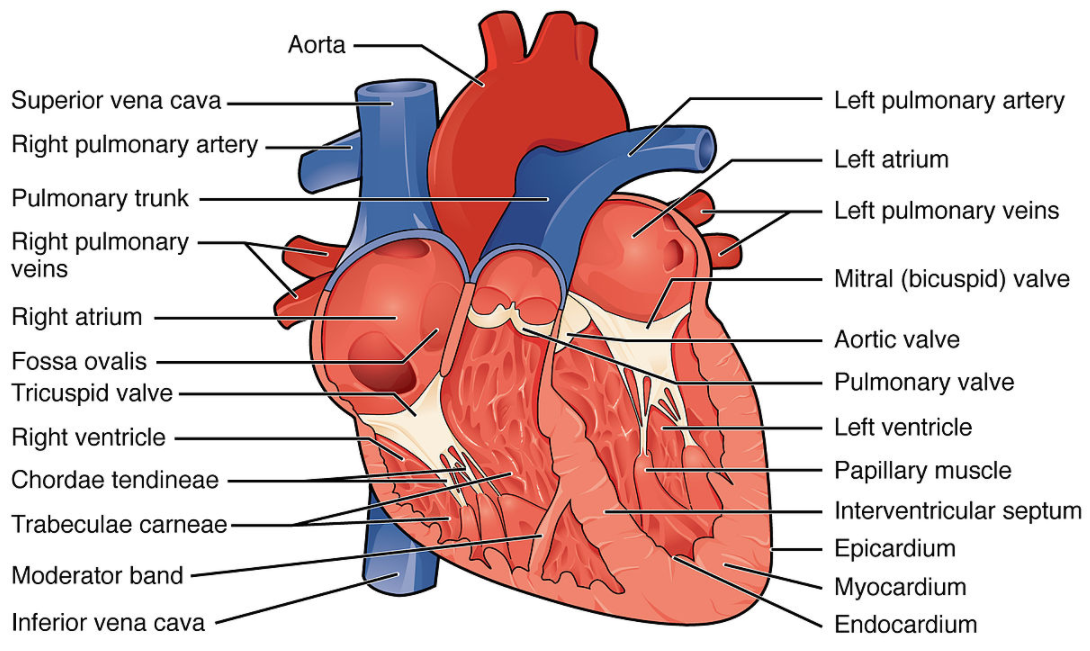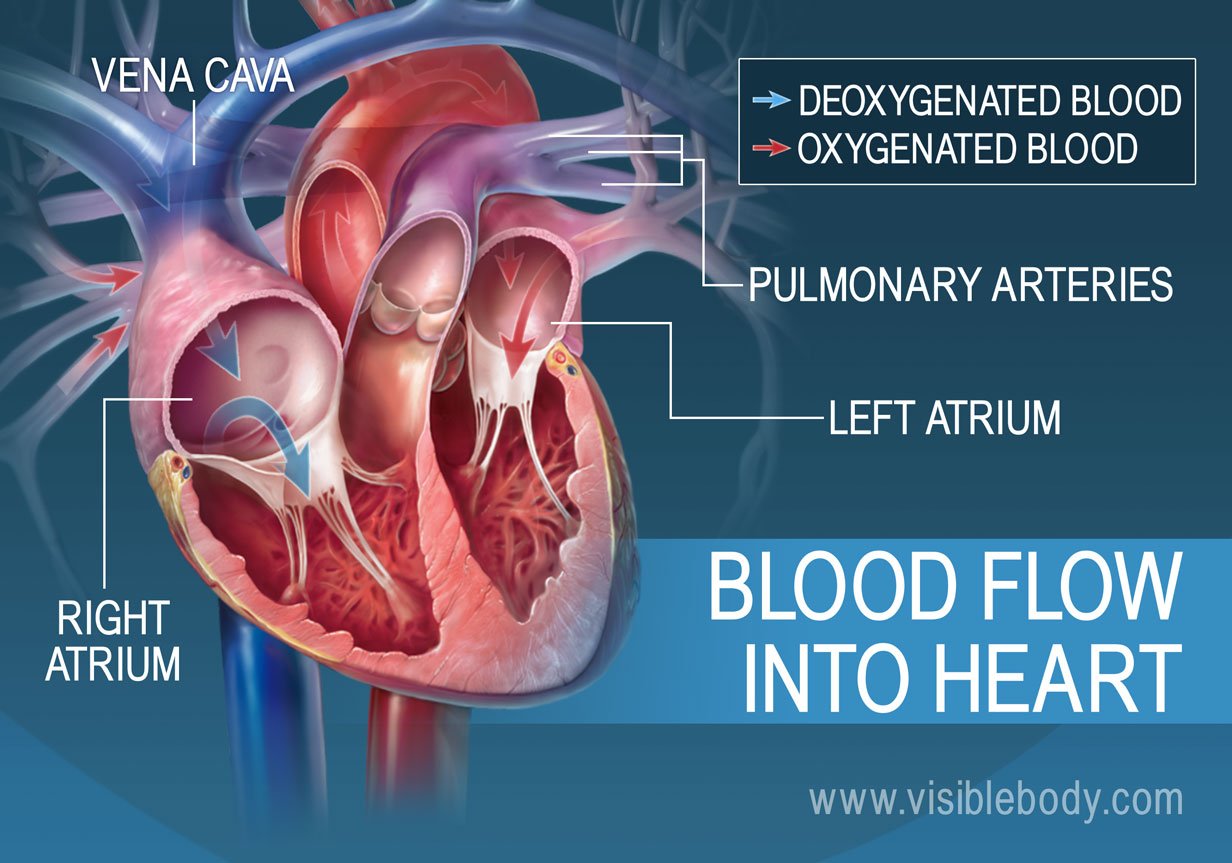Systematic circulation includes flow of oxygenated blood from the left ventricle to all parts of body and deoxygenated blood from various body parts to the right atrium. Cardiomyopathy arrhythmias and heart infections.
Symptoms of heart disease include chest pain sweating nausea and shortness of breath.

. The primitive heart is partitioned into four separate chambers during the fourth week. Treatment for heart disease includes lifestyle changes. The flow of blood into the heart within the heart chambers and from the heart is guarded by the four valves present in the heart.
Birds like mammals have a 4-chambered heart 2 atria 2 ventricles with complete separation of oxygenated and de-oxygenated blood. This is a closed circulatory system. The umbilical arteries contain oxygenated blood The heart is derived from.
It includes systematic and pulmonary circulation. The singular form is atrium. Two types of blood vessels carry blood throughout our bodies.
- a condition in which the blood does not contain enough hemoglobin the. Arteries carry oxygenated blood blood that has gotten oxygen from the lungs from the heart to the rest of the body. The heart is a muscular organ in most animals that pumps blood through the blood vessels of the circulatory system.
- the two upper chambers of the heart. The measurement of blood pressure without further specification usually refers to the systemic arterial pressure defined as the pressure exerted by circulating blood upon the walls of blood vessels. It pumps oxygen-rich blood to the rest of the body.
Open circulatory systems are found in invertebrate animals in which the circulatory fluid bathes the internal organs directly even though it may be moved about with a pumping heart. True false The heart is derived from. The right ventricle pumps blood to the lungs while the left ventricle pumps blood to the rest of the body.
Ectoderm endoderm both. The left ventricle is the strongest chamber of the heart. The thick-walled inferior chambers of the heart that pump blood into the arteries are called _____.
The circulatory system is made up of blood vessels that carry blood away from and toward the heart. The foramen ovale shunts oxygenated blood from the left to the right side of the heart. The left atrium receives oxygenated blood from the lungs and pumps it to the left ventricle.
The pumped blood carries oxygen and nutrients to the body while carrying metabolic waste such as carbon dioxide to the lungs. Blood then travels through veins back to the heart and lungs so. Artery in the body carrying oxygenated blood from the heart to other arteries in the body.
A vein is an elastic blood vessel that transports blood from various regions of the body to the heartVeins are components of the cardiovascular system which circulates blood to provide nutrients to the cells of the bodyUnlike the high pressure arterial system the venous system is a low pressure system that relies on muscle contractions to return blood to the heart. The part of blood circulation that carries oxygenated blood away from the heart to the body and returns deoxygenated blood back to the heart. The cardiac plexus and cardiac nerves dominate the innervation of the heart and contain both parasympathetic and sympathetic fibers.
Flow of same blood twice through the heart once in oxygenated form and other in deoxygenated form is called double circulation. Blood circulates inside blood vessels and circulates unidirectionally from the heart around one of two circulatory routes then returns to the heart again. Oxygenated - Coronary arteries descending arteries carotid arteries left ventricle.
The cardiovascular system consists of the heart which is an anatomical pump with its intricate conduits arteries veins and capillaries that traverse the whole human body carrying bloodThe blood contains oxygen nutrients wastes and immune and other functional cells that help provide for homeostasis and basic functions of human cells and organs. In humans the heart is approximately the size of a closed fist and is located between the lungs in the middle compartment of the chest. Heart cardiovascular disease CVD heart disease is a variety of types of conditions that affect the heart for example coronary or valvular heart disease.

In Which Chamber Of Heart Is Oxygenated And Deoxygenated Class 11 Biology Cbse



0 Comments